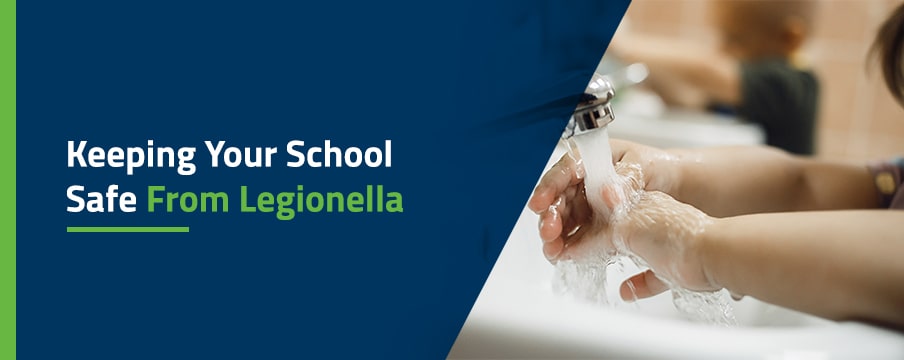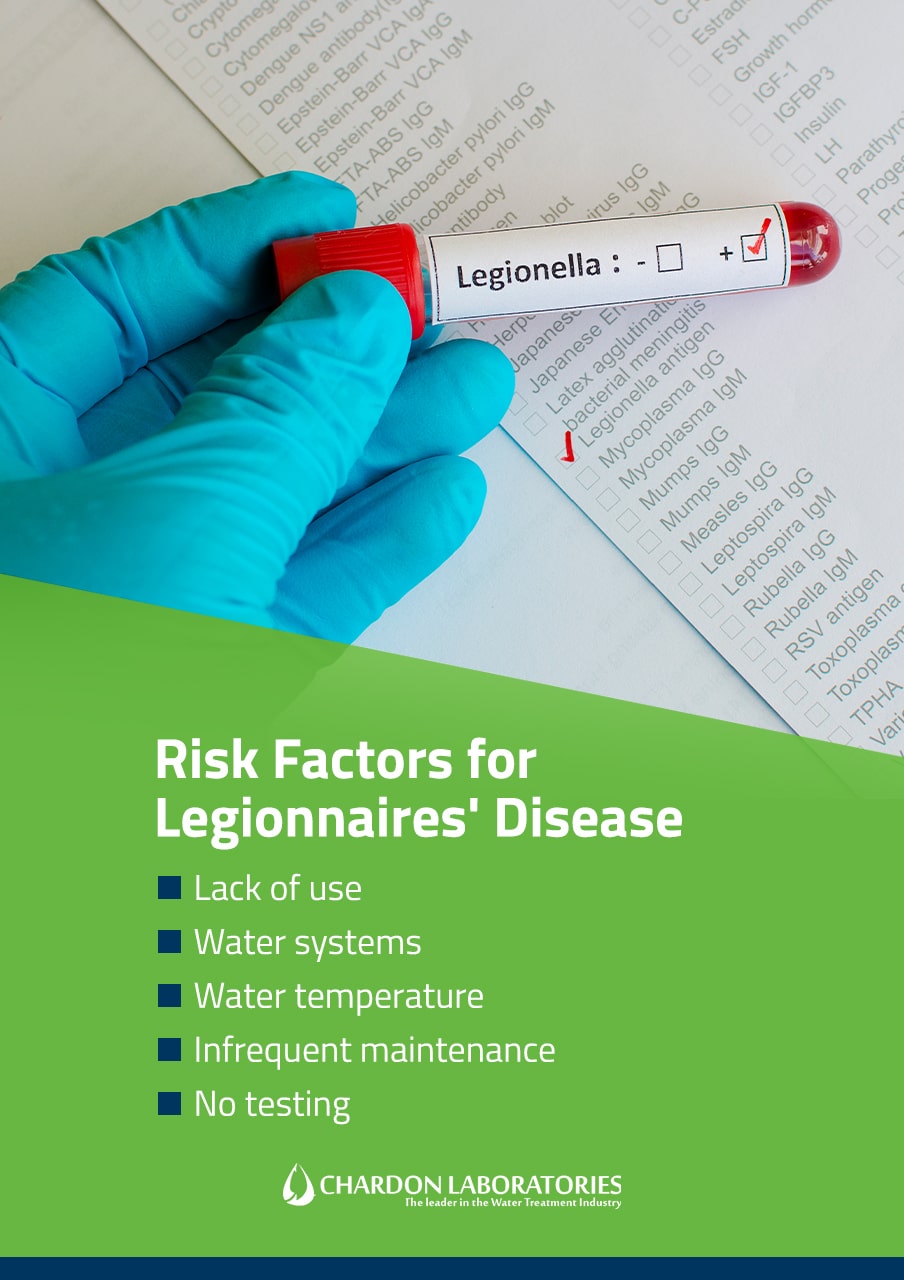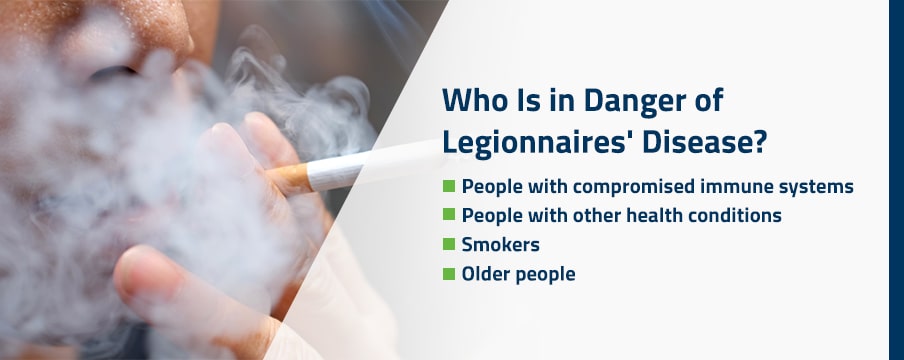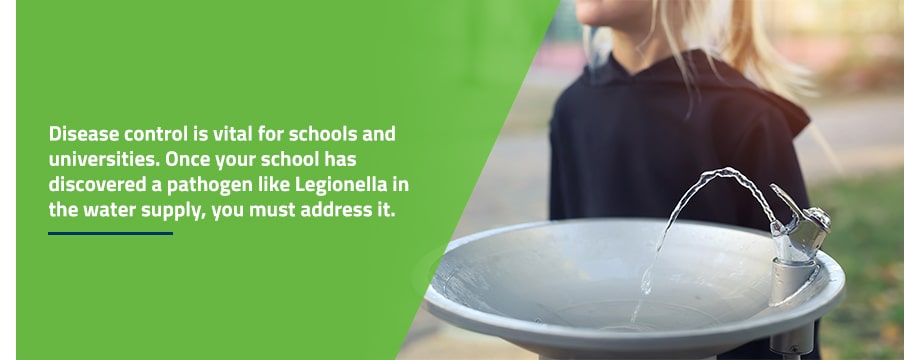
Students and faculty wash their hands, drink water and shower at school buildings. Measuring and maintaining water quality is a crucial job for schools and their building managers. Legionella bacteria are one of the potential contaminants found in schools’ water systems.
With many schools and universities planning to open their doors after months of remote learning during the COVID-19 pandemic, water quality questions are an essential consideration for administrators and building managers. How can schools understand the risk of Legionella and take steps to mitigate it?
Our Legionella Testing & Control Services
Legionella bacteria naturally live in freshwater, but when they proliferate in a building’s water system, these bacteria can cause illness. Exposure to these bacteria can cause Legionnaires’ disease and Pontiac fever. Pontiac fever, the milder of the two illnesses, causes body aches and fever. Legionnaires’ disease is a more severe illness that infects the lungs. Symptoms of this disease include cough and shortness of breath, in addition to the body aches and fever typical of Pontiac fever. When Legionella bacteria contaminate a water system, people can become infected by breathing in water droplets.
Legionnaires’ disease spreads when people breathe in water droplets carrying Legionella bacteria. You do not get sick from drinking the water contaminated by these bacteria. People typically get the disease from contact with contaminated water, rather than getting it from another infected person.
The first reported outbreak of Legionnaires’ disease happened in 1976. Since then, health officials have tracked occurrences of the disease, though it is likely that cases still go unreported. The number of cases reported to the CDC has increased over the past two decades. There were a total of 10,000 cases of the disease in 2018 alone.

Why might your school be in danger of a Legionnaires’ disease outbreak?

Not everyone who gets exposed to Legionella will develop Legionnaires’ disease. Most healthy people are unlikely to become ill. Those who are most at risk of Legionnaires’ disease include the following.
Testing for Legionella bacteria is largely voluntary, and rules can vary depending on the school system. However, testing can identify these dangerous bacteria and give facilities the time to address it before experiencing an outbreak.
Developing a water management program can help schools detect the presence of Legionella and other harmful bacteria. Armed with the test results, schools and their building managers can take measures to protect students and staff. Testing is a crucial first step in establishing a water management program. How does testing your school water supply work?
Determining how often to conduct testing will be a matter of a school’s specific risk profile and any potential regulatory requirements you must meet.
Many schools and universities have budgetary concerns to weigh when determining whether to test the water supply. Each school takes a unique approach to risk tolerance and mitigation, but testing can play a valuable role in keeping everyone who uses the water at the school safe.

Disease control is vital for schools and universities. Once your school has discovered a pathogen like Legionella in the water supply, you must address it. If your school’s test results come back positive for Legionella, it is best to work with an expert in water treatment to form an action plan for mitigation and prevention of further overgrowth of the bacteria in the future. Remember, schools in some locations may need to take specific steps following a confirmed Legionnaires’ disease outbreak.
Water treatment approaches for Legionella include the following.
Flushing a water system is a simple measure that can prevent Legionella overgrowth. It can also play a role in removing any detected bacteria from the system. Flushing a water system involves turning on every point of use in a school’s water system. You should run every faucet, shower, water fountain, eyewash station, etc., to flush any stagnant water from the system. Building managers and their teams should let the water run at its maximum temperature. The Centers for Disease Control recommend allowing the water to reach 120 degrees Fahrenheit or above, carefully following anti-scalding measures.
The team members responsible for overseeing the flushing process must take steps to protect themselves against splashing and aerosols. If the water system gets contaminated with Legionella, it could infect the staff members via aerosols released during the flushing process. Note that a single flushing is unlikely to clear a system contaminated with Legionella overgrowth.
Flushing is an effective measure to help clear a water system, but some parts may need additional disinfection measures. For example, cooling towers, ice machines, fountains and hot tubs will likely need further disinfection to prevent Legionella contamination or manage an outbreak.
Legionella contamination in a school’s water supply may require chemical treatment. A Legionella disinfection strategy may use chemicals such as chlorine, chlorine dioxide, chloramine and ozone. These chemicals inactivate the bacteria in the water, making sure these organisms cannot infect people. They can be effective even if biofilms protect the bacteria in question. The chemical treatment’s efficacy is not always 100%, and it will depend on factors like water temperature and pH levels.
Copper-silver ionization systems and ultraviolet light are two other approaches to disinfecting water systems. Both these approaches inactivate various pathogens commonly found in water systems.
Following Legionella treatment, complete another round of testing to confirm that bacterial overgrowth in the water system is no longer a problem. Going forward, it will be vital to continue following a vetted and established water management plan.
Regular maintenance, including flushing and testing, can help prevent future outbreaks. Some water systems’ designs will make them more prone to contamination, a factor that will go into determining how often procedures like flushing and testing are necessary. Remember, it is also possible for Legionella to go undetected if it’s living in a biofilm, lurking until it grows to high enough levels to cause an outbreak. A carefully crafted water management plan can account for and mitigate this risk.
Chardon Labs provides comprehensive services to help schools assess and improve their water quality. Our team can perform a survey of your building’s water systems to detect the presence of Legionella and determine the level of risk. Next, we work with you to build and validate a water management plan to control the bacteria.
You want the peace of mind that comes with knowing students, teachers and staff can safely use the building’s water supply when school is back in session. We are here to help you make sure that is the case. Contact us to discuss Legionella testing and water management for your school.